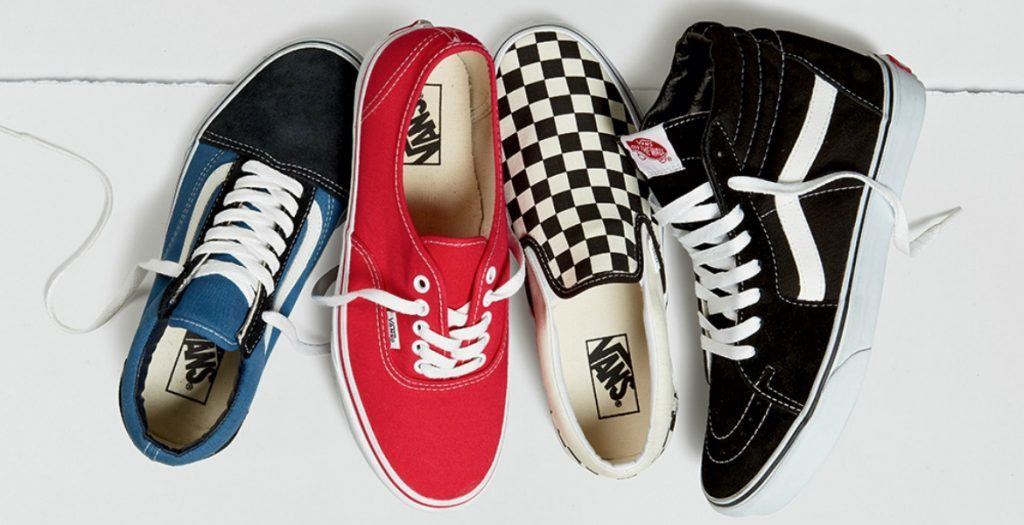Last spring, as I walked around Boston, I turned to my coworker and told her Vans were making a comeback. All of the college students were breaking out new shoes they’d purchased for the post-winter thaw or they were finally wearing their Christmas gifts. The feet once covered in Converse-branded canvas were now covered in Vans-branded canvas.

My coworker shrugged and claimed she didn’t notice. So, determined to make a point, I pointed out every single pair of checkered Vans I saw over the course of the next month. There were a lot, and in due time I had made my point. Kids were wearing Vans again.
This was a scary revelation. Not because I don’t like Vans, I actually always liked them. It was scary because this was the first time I remember a fashion trend coming back into style where I was conscious of its prior popularity. I remember being in middle school and the skater crowd, or anyone who wasn’t plastered in Abercrombie, had Vans on their feet. In fact, I have a pair of checkered Vans in my closet I haven’t worn in years, and they still fit.
A few months later, I found an article on Esquire discussing how Vans became a cool shoe again. This was a minor success for me, knowing that I wasn’t going crazy. The brand really did make an effort to reestablish their presences and capture a new generation of consumers. With this initiative, a younger crowd was embracing the brand and I took notice.
I could now validate my obersavtion of Vans’s popularity. The fashion trends I begged my parents to spend money on are now breaking the wallets of a new group of parents. Vans may be the first relic of my childhood to be worn by a new generation, but I fully anticipate more fashion from my middle school days to become mainstream again.
Now that we’ve established Vans are cool again, there’s also an important message behind their resurgence: authenticity. There’s no doubt that Vans is an established brand, but their road to success has been filled with ups and downs. However, their success is dependent upon their core customers, and that’s the skater crowd. Their shoes will always cater to that audience, and while other populations of people will also embrace the style, they are going to do so knowing they’re wearing a skater shoe.
While the patterns and prints on new shoes are going to vary, they maintain the same function and comfort. This is important to their core customer. The skater crowd is likely to accept some out-there styles, so long as the functionality remains in tact. Hence the checkered Vans, or the pattern that has become synonymous with the brand. The show features a pattern unlike most clothing accessories, but the checkered Vans are just as functional as any shoe.
This message holds true to many brands looking to expand. Take calculated risks, but don’t abandon your core audience. Having a strong identity will allow the right people to find you, but if you lose that identity new customers may not find you and you’re going to scare away your existing customers.
As I get older, I need to accept the fact that Vans are once again popular. At least I can get on board with this trend and not have to break the bank, considering I already have the shoe. Not every trend will experience the same longevity as Vans, but Vans has captured enough customers to support their continued success. While I don’t know if their newfound popularity will last, I’m not going to get rid of my shoes. I expect they’re on track to be popular in the 2030’s, when I’m older and today’s styles are “retro.”






You must be logged in to post a comment.